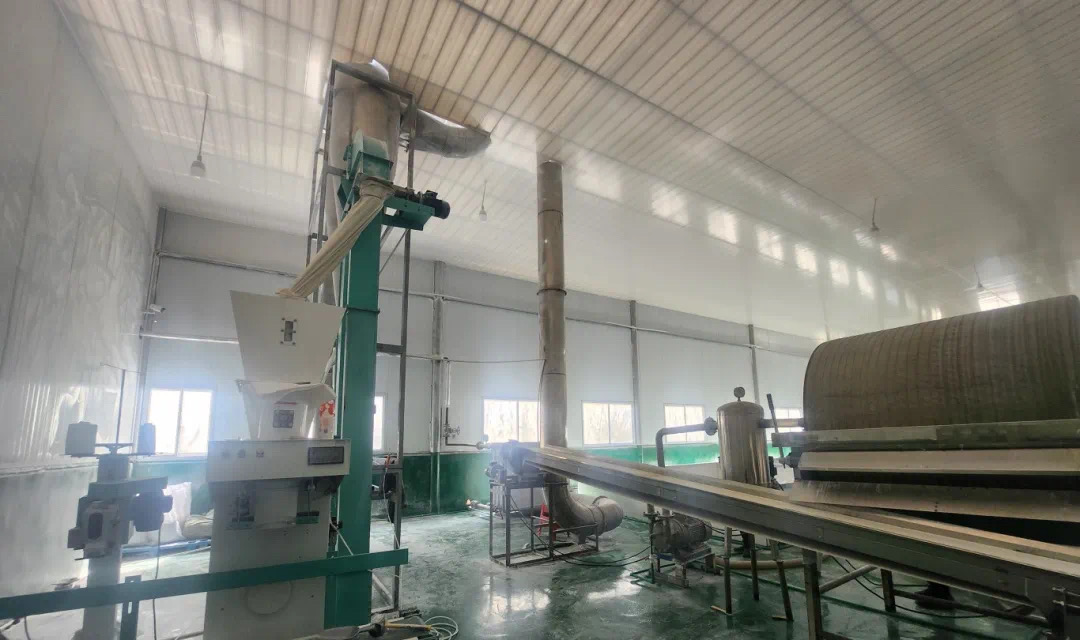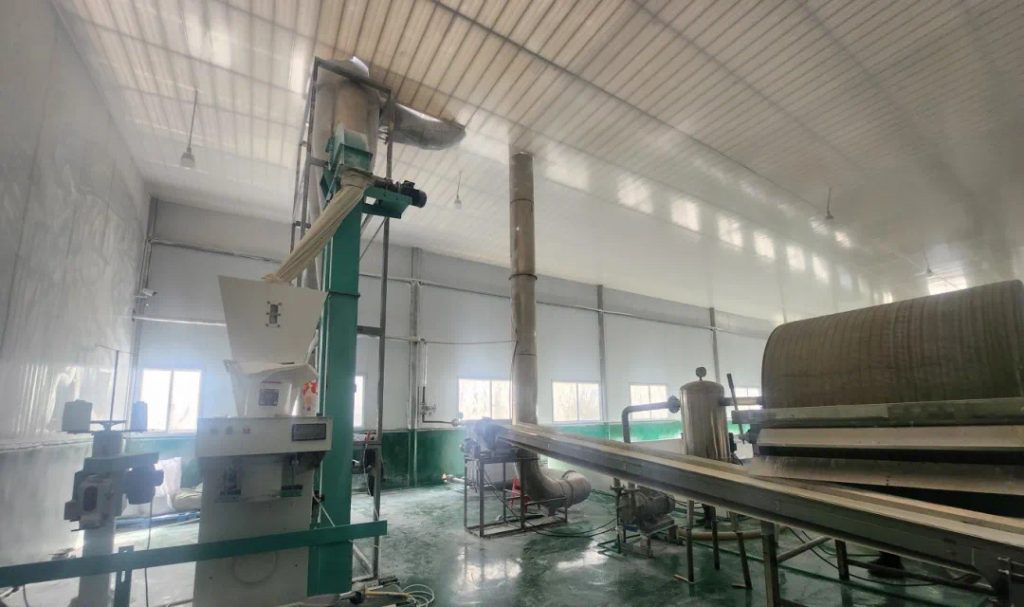
In the starch packaging section, especially in the workplaces of packaging scales and starch sieves, dust clouds mixed with air and starch dust often appear, posing a high risk of dust explosion. In order to facilitate the adoption of favorable measures in production design to prevent dust explosions or reduce explosion losses, especially for the electrical design and selection of electrical equipment in explosive hazardous environments, it is necessary to classify hazardous locations for starch packaging. After passing through the starch conveying system, it enters the buffer bin, and a starch vibrating screen can be added as needed. After screening, the starch enters the packaging system, and the packaged finished starch is finally sent to the finished product warehouse.
Starch dust is a non-conductive combustible dust. Starch dust is suspended in the air as extremely fine solid particles, and the oxygen in the air is absorbed on the surface. The finer the dust particles, the more oxygen is adsorbed, and the easier it is to explode. Generally, the finer the dust, the drier it is, the lower the ignition point, and the greater the risk. The ignition temperature of starch dust cloud (starch dust/air mixture) is 410℃-430℃.
The concentration of starch dust in the production workshop should be less than 4mg/m3, which is far less than the explosion limit of starch.
Principles for Preventing Starch Packaging Dust Explosion Starch dust explosions are very harmful. Therefore, safety should be put first, prevention of dust explosions should be the main priority, and losses caused by explosions should be minimized. There are three conditions for a combustible dust explosion: the dust itself is explosive; the dust must be suspended in the air and mixed with air to exceed the explosion concentration limit; and there are sparks, arcs or high temperatures sufficient to ignite the starch dust mixture. According to the conditions of dust explosion, the basic principles for preventing starch dust explosion are as follows: ① Prevent the formation of starch dust/air explosive mixture; ② Strictly control sparks, arcs or high temperatures that are sufficient to ignite starch dust mixture; ③ Set up pressure relief facilities to prevent explosions Release the pressure promptly at the beginning; ④ Cut off the explosion propagation path to prevent secondary explosions, ⑤ Reduce the damage caused by explosion pressure and shock waves to personnel, equipment and buildings; ⑥ Detect and alarm. Based on the above starch dust explosion prevention principles, corresponding measures should be taken to prevent dust explosions in design and production.
Process design: After starch is dried, it is transported by air flow. This is a transport and cooling process that can reduce the starch temperature. When process conditions permit, try to centrally arrange dust-generating equipment to reduce the scope of explosion hazards and reduce the cost of defense. The starch cache warehouse can be arranged on the roof of the building and in the open air. Add a magnet before the starch enters the packaging section to prevent iron from entering and causing sparks when it collides with the equipment. The pipelines transporting starch should be electrostatically bridged and grounded to prevent the accumulation of static electricity on the pipelines and reduce the possibility of explosions caused by static electricity. Set up suction dust hoods. Starch packaging scales and vibrating screens have fixed places where dust is generated. Add dust hoods where dust is generated to form a negative pressure around the dust generating points to suck away the generated dust and reduce the work load. The potential for dust clouds to be generated at the site.

Explosion-proof measures in starch packaging production should also pay attention to preventing the occurrence of dust explosions during production. Establish a safety production responsibility system and clarify safety production responsibilities. Establish a mass prevention and mass governance system. Inspire every employee’s sense of safety responsibility. It is necessary to strengthen production site management and reduce production accidents caused by operations, such as regular cleaning of dust accumulation, personnel working in explosion hazard areas are prohibited from wearing spiked shoes and clothes with static electricity, and open flame operations, such as electric welding and arc welding, are prohibited in dust explosion hazard areas. , cutting and other operations. Regularly provide employees with safety education on dust explosions to improve safety awareness and increase safety knowledge and skills.
Henan Huatai starch machinery supply professional sweet potato starch production line, cassava starch production line, potato starch line, corn starch plant, our engineer will give you the best solution according to your needs, any need please email to info01@cnoilmachine.com